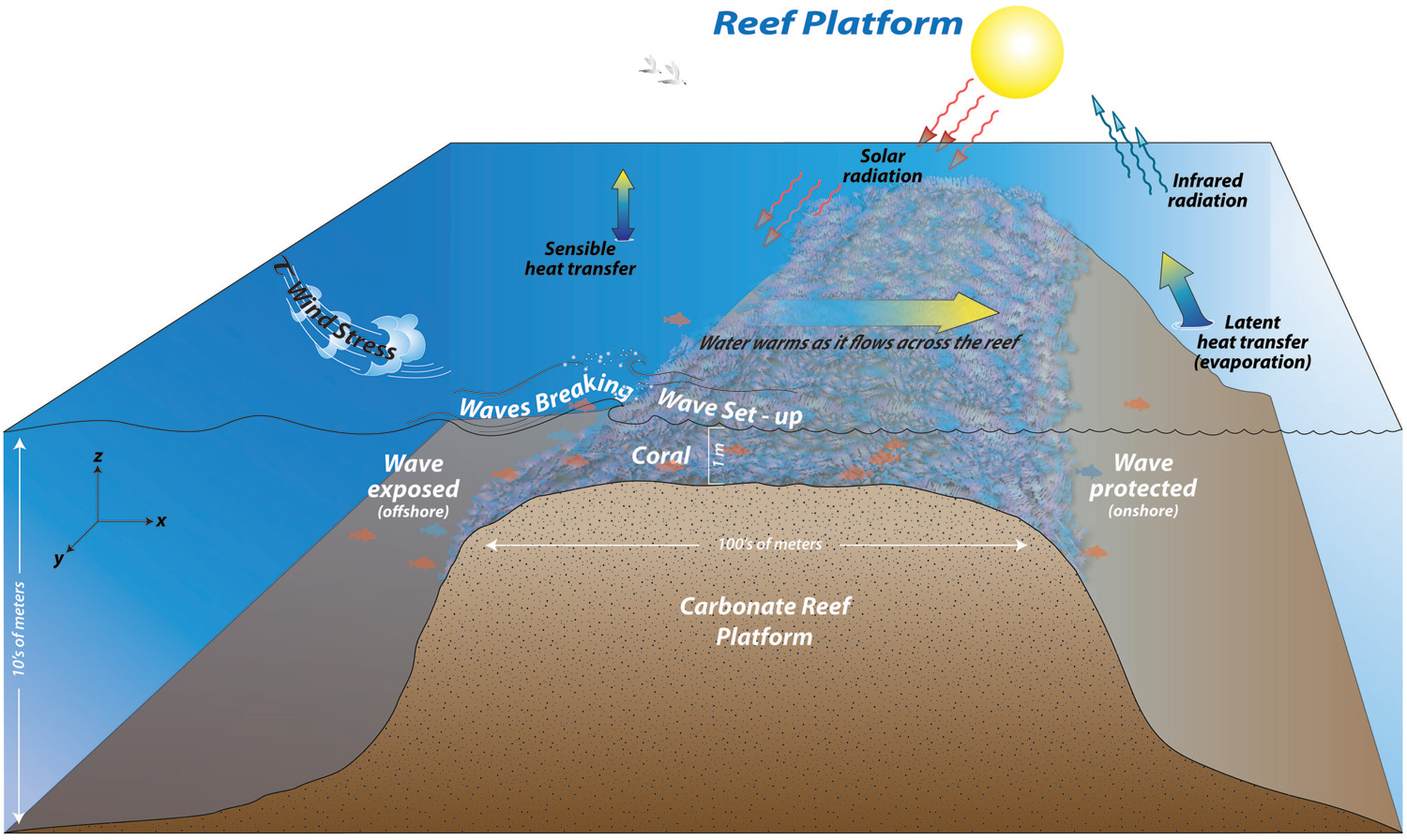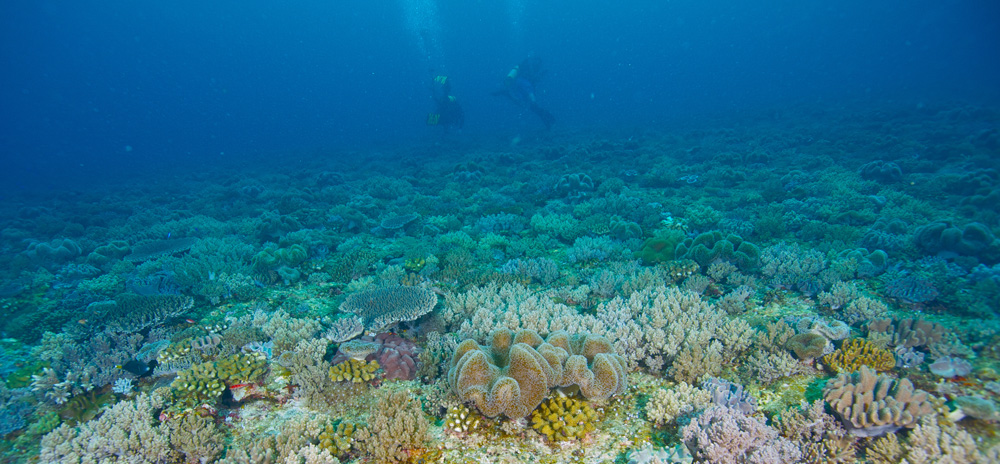In the Coastal Dynamics Lab, we are interested in understanding the role of hydrodynamics in shaping the physical environment on coral reefs. We take measurements of currents, temperature, and meteorological conditions, examine wave-driven circulation, and construct heat budgets for reefs. Additionally, we are working closely with coral biologists to understand how spatial patchiness in coral bleaching and mortality is related to the temporal and spatial variability in water temperature and the types of symbionts.

One of the major challenges in understanding ecological processes is quantifying physical and biological patterns at appropriate scales. For example, rising sea surface temperatures threaten coral reefs on a global scale, but sub-meter scale patterns in temperature and flow fields can shape an individual coral colony’s thermal tolerance and influence recovery from an extreme thermal event. Coral reefs are widely considered to be thermally sensitive, yet during mass bleaching events there is commonly patchy survival of a small number of colonies and reef sections. Much of the focus of thermal observations on coral reefs has been from satellite products at spatial scales larger than 4 km and temporal scales of weeks to months, but in situ observations reveal that extremely different thermal microclimates can exist within a single reef flat (at spatial scales of 100’s of m) and diurnal temperature fluctuations on reefs can be as large as seasonal ranges. What are we missing when we assess the environmental conditions on coral reefs from large-scale remote sensing products?
CDL graduate student, Aryan Safaie, led a project to analyze in situ water temperature observations—some records decades long—from coral reefs around the world. By carefully characterizing the physical variability in these records and analyzing them along with data of bleaching events, we found that increases in high-frequency temperature variability (i.e. daily temperature range) reduced the prevalence of bleaching (i.e. % area affected) more than any other temperature-related variable. Thus, reefs with greater high-frequency temperature variability may represent particularly important opportunities to conserve coral ecosystems in a warming world. See more details on this study in Safai et al. (2018)

Related Publications
(bold are members of CDL; * is a student or postdoctoral author)
Safaie, A*, G Pawlak, and KA Davis. (2022) Diurnal thermally-driven cross-shore exchange in steady alongshore currents. Journal of Geophysical Research, Oceans, 127, 4, e2021JC017912.
Davis, KA, G Pawlak, SG Monismith. Turbulence and Coral Reefs. (2021) Annual Reviews of Marine Science, 13, 343-373.
EC Reid*, SJ Lentz, TM DeCarlo, AL Cohen, KA Davis. Physical processes determine spatial structure in water temperature and residence time on a wide reef flat. Journal of Geophysical Research: Oceans 125 (12), e2020JC016543.
Ulloa, HN*, KA Davis, SG Monismith, ER Pawlak. Temporal variability in thermally-driven cross shore exchange: the role of semidiurnal tides. (2018) Journal of Physical Oceanography, 48(7), 1513-1531.
Lentz, SJ, J Churchill, KA Davis. (2018) Coral reef drag coefficients – surface gravity wave enhancement. Journal of Physical Oceanography, 48, 1555-1566.
Safaie, A*, NJ Silbiger*, TR McClanahan, ER Pawlak, DJ Barshis, JL Hench, JS Rogers*, GJ Williams, and KA Davis. (2018) High-frequency temperature variability reduces the risk of coral bleaching. Nature Communications, 9, 1671.
Lentz, SJ, KA Davis, J Churchill, TM DeCarlo*. (2017) Coral reef drag coefficients – water depth dependence. Journal of Physical Oceanography, 47(5), 1061-1075.
Lentz, SJ, JH Churchill, KA Davis, JT Farrar, J Pineda, and V Starczak. (2016) The characteristics and dynamics of wave-driven flow across a platform coral reef in the Red Sea. Journal of Geophysical Research: Oceans, 121(2), 1360-1376.
Lentz, SJ, JH Churchill, KA Davis, and JT Farrar. (2016) Surface gravity wave transformation across a platform coral reef in the Red Sea. Journal of Geophysical Research, 121(1), 693-705.
Pineda, J, V Starczak, A Tarrant, J Blythe, KA Davis, JT Farrar, M Berumen, and J da Silva. (2013) Two spatial scales in a bleaching event: Corals from the mildest and most extreme environments escape mortality. Limnology and Oceanography, 58(5), 1531-1545.
Davis, KA and SG Monismith (2011). The modification of bottom boundary layer turbulence and mixing by internal waves shoaling on a barrier reef. Journal of Physical Oceanography, 41(11), 2223-2241.
Davis, KA, SJ Lentz, JP Pineda, JT Farrar, VR Starczak, JH Churchill. (2011). Observations of the thermal environment on Red Sea platform reefs: A heat budget analysis. Coral Reefs, 30, 25-36.
